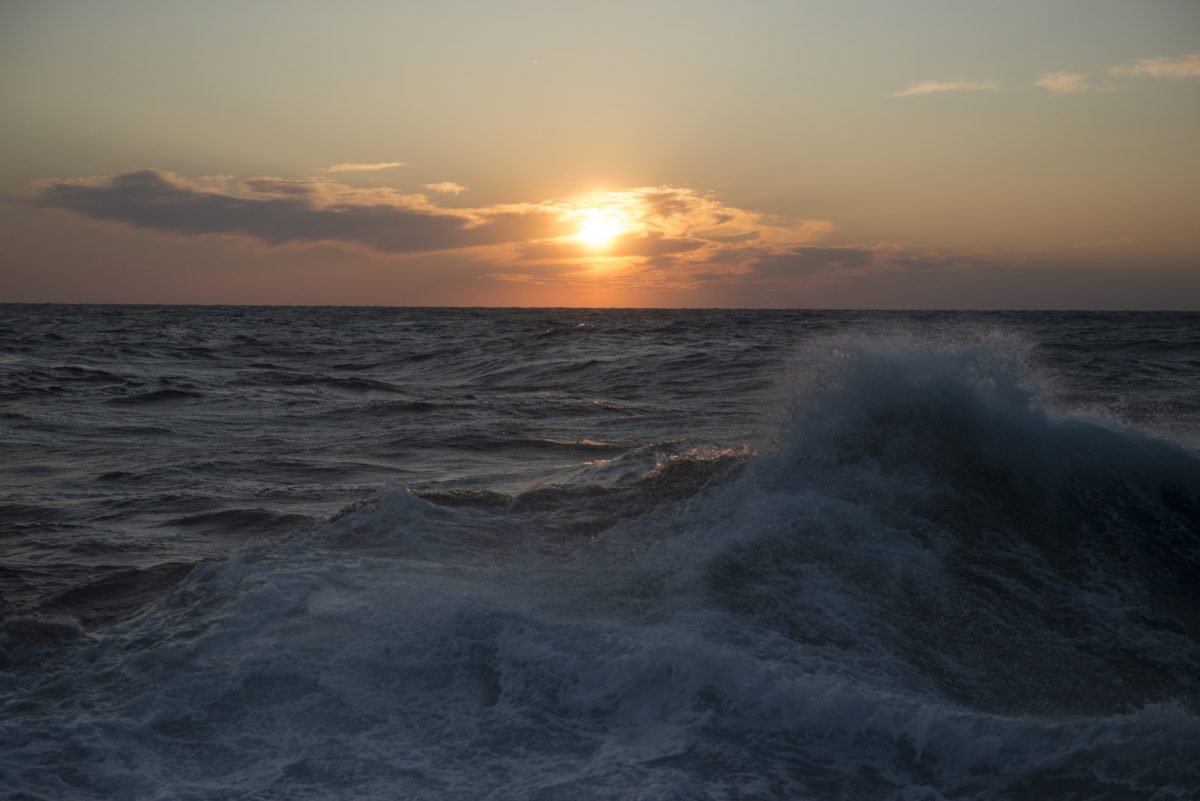WHOI-led team awarded $7.6M to support Gulf of Mexico Loop Current research
 Gulf of Mexico surface waves forming in front of a sunset. Photo by Chris Linder
© Woods Hole Oceanographic Institution
Gulf of Mexico surface waves forming in front of a sunset. Photo by Chris Linder
© Woods Hole Oceanographic Institution March 25, 2022
Woods Hole, MA — A Woods Hole Oceanographic Institution-led research team has been awarded $7.6 million from the Gulf Research Program (GRP) of the National Academies of Sciences, Engineering, and Medicine (NASEM). The project, “An Operational System Using Real-time Subsurface Observations to Improve Loop Current Forecasts”, is one of three consortia that will undertake the third phase of the Understanding Gulf Ocean Systems (UGOS) program (UGOS-3), helping address forecasts of important currents of the Gulf of Mexico.
All totaled, $22 million is being committed to this phase-3 research. Other awarded institutions include Texas A&M and Florida State University.
Amy Bower, Senior Scientist and Department Chair of the Department of Physical Oceanography at WHOI, is the project director for the WHOI project, which focuses on improving Loop Current system forecasts. The project includes four major efforts: deployment of Argo floats, deployment of minimal real-time mooring array in the Yucatan Channel, development of an operational topographic monitoring and forecast system for Rossby waves (also known as planetary waves), and improvement of an existing ensemble forecast model.
“We are honored to receive such a generous grant from the NASEM, supporting important research on Loop Current movement and the role it plays in better understanding the Gulf of Mexico,” said Bower. “Our team looks forward to supporting important, interdisciplinary work to help solve a variety of Gulf forecast issues.”
Deep and fast-moving, the Loop Current is of interest to industry and weather forecasters, as well as to the scientific community due to sometimes unpredictable changes in its velocity, temperature, and position. Its deep, warm eddies can supply heat to tropical storms moving over them, allowing the storms to rapidly intensify. This was suggested to be the case last year when Hurricane Ida quickly grew from a Category 1 to a Category 4 hurricane before it made landfall. Additionally, if the Loop Current had behaved differently during the Deepwater Horizon oil spill, it could have pushed oil beyond the Gulf, causing damage to a much larger area.
UGOS-3 is a five-year program, which began March 1, and builds on a foundation of knowledge established during the program’s first two phases. The UGOS-3 project teams will work collaboratively to apply existing and emerging data to improve operational forecasting of the Gulf of Mexico ocean dynamics, including the Loop Current and its eddies. Enhanced predictions of these currents and eddies will help avoid risky conditions for oil drilling and production, thereby reducing risks to offshore workers. They will also help improve oil spill response, weather forecasting, and the sustainable management of the Gulf’s rich fisheries resources.
The National Academies of Sciences, Engineering, and Medicine are private, nonprofit institutions that provide independent, objective analysis and advice to the nation to solve complex problems and inform public policy decisions related to science, technology, and medicine.
###
About Woods Hole Oceanographic Institution
The Woods Hole Oceanographic Institution (WHOI) is a private, non-profit organization on Cape Cod, Massachusetts, dedicated to marine research, engineering, and higher education. Established in 1930, its primary mission is to understand the ocean and its interaction with the Earth as a whole, and to communicate an understanding of the ocean’s role in the changing global environment. WHOI’s pioneering discoveries stem from an ideal combination of science and engineering—one that has made it one of the most trusted and technically advanced leaders in basic and applied ocean research and exploration anywhere. WHOI is known for its multidisciplinary approach, superior ship operations, and unparalleled deep-sea robotics capabilities. We play a leading role in ocean observation and operate the most extensive suite of data-gathering platforms in the world. Top scientists, engineers, and students collaborate on more than 800 concurrent projects worldwide—both above and below the waves—pushing the boundaries of knowledge and possibility. For more information, please visit www.whoi.edu.
